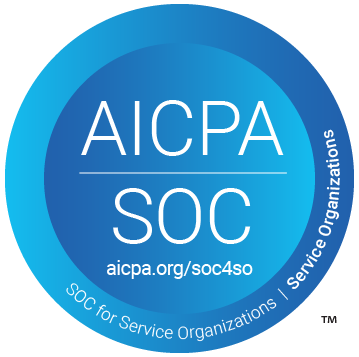The American Innovation and Manufacturing (AIM) Act of 2020 has made refrigerant management a priority for manufacturers, distributors, and asset managers if they are to avoid costly penalties.
By using tracking software to stay on top of refrigerants from cradle to grave, businesses will find it easier to stay compliant with increasingly strict environmental regulations.
Read our recent blog to find out more about some of the challenges businesses are facing.
Refrigerant tracking software has become an essential tool that allows businesses to:
-
Better manage and streamline their processes and operations.
-
Monitor their returnable assets to ensure they’re minimizing refrigerant leaks.
-
Help with disposal and reclamation by accurately assessing exactly how much residual product remains in their emptied ISO tanks and cylinders.
-
Provide accurate, real-time recordkeeping to improve accountability and quickly respond to requests from the U.S. Environmental Protection Agency (EPA) about shipments.
What is the AIM Act?
The introduction of the AIM Act was intended to limit the impact of greenhouse gases (GHGs) on the earth’s atmosphere and significantly reduce the use of harmful hydrofluorocarbons (HFCs). HFCs are commonly used in the refrigerants industry and are recognized as a greater threat to global warming than carbon dioxide.
The EPA not only wants HFC production to be gradually phased out in the coming years through an allowance allocation and trading program, but it’s insistent that the refrigerant industry must also raise efforts to capture and reclaim these potent gases. It also wants to see the industry develop innovative new technologies to ensure HFCs are far less damaging to the environment.
The Act is targeting a phasedown of the output of HFCs – starting with a 10% reduction in January 2022 and rising to an 85% reduction by 2036.
According to the EPA, the HFC Allocation Program from 2022-2050 will save the equivalent to 4.6bn metric tons of carbon dioxide – or around three years of U.S. power sector emissions (at 2019 levels).
Capturing Key Data
Businesses that work with refrigerants and want a safeguard from potential penalties and fines can no longer afford to ignore the benefits of tracking software, says Elizabeth Wallace, VP of Product at TrackAbout.
Central to these new regulations is the reduction of HFCs going into the environment. “It's incumbent upon the manufacturer to make sure they have an understanding of where the products they’ve made are going and how they’re being used.”
“As the industry tries to reduce its use of refrigerants for the good of the environment, it's important that they’re managed carefully. Businesses need to know exactly where a refrigerant is going, how much is being consumed, and how much is being let off into the atmosphere. There needs to be proper control and a chain of custody on all of those assets.”
Digitally capturing and storing key criteria such as product type, quantity, movement, who’s handled the assets, usage, and disposal provides complete traceability and transparency, she continues.
By scanning barcodes attached to assets, users can see order numbers, customer details, product codes, shipping and return information, scan times, truck and branch data, as well as the full history of the asset (including owners, manufacture date, contents, and when and where it was loaded and unloaded).
“The AIM Act was designed to ensure refrigerants were tracked all the way down to the distributor or end customer, from cradle to grave,” she says. “Refrigerant management has therefore become hugely important.”
All traces of refrigerants must be fully accounted for – even the residuals that are left in containers when they’re emptied. Being able to do this accurately by relying on physical paperwork and multiple spreadsheets is almost impossible, she says, which is why more and more users are turning to tools like TrackAbout.
Staying Ahead of Regulation
With an ever-changing regulatory environment, it pays to be protected – and implementing suitable asset tracking software is a great way of staying in complete control of assets and their contents. With frequent updates and an ever-growing library of modules and features, cloud-based systems such as TrackAbout can quickly adapt to any new rules that are being introduced.
TrackAbout will soon be introducing more custody management features to its software, she adds. This new functionality, due for release later in 2025, will allow users to update and view information by scanning a QR code on an asset that links through to a public URL. This displays that particular asset’s information, including GPS or geolocation data, and allows users to fill out a form explaining exactly where and who they are for complete traceability.
“Good refrigerant management makes you far more efficient and allows you to better control your assets,” says Wallace. “If you have poor management, it probably means you’re going to be losing assets and increasing your fines. That’s really what’s making asset tracking more desirable for refrigerants companies. They need a solution such as this because governments are forcing them to make these changes.”
To find out more about the phasedown and the implementation of the AIM Act, visit the EPA website and the dedicated FAQ page.
TrackAbout helps businesses monitor and manage valuable assets, streamline operations, optimize workflows, and ensure compliance with the latest AIM Act requirements. Learn more by requesting a free demo with our team of experts.
.png)



